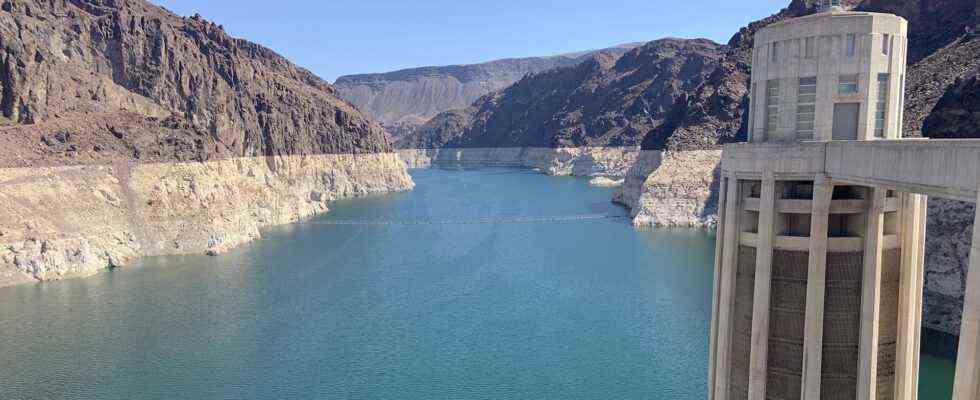Status: 13.09.2021 5:20 p.m.
While the east and south of the USA suffer from storms and heavy rain, the west of the country has been moaning from a drought for years. Lake Mead – the largest drinking water reservoir in the United States – has hit a record low.
The air shimmers. The asphalt is soft. The thermometer on the dashboard shows 46 degrees Celsius. The landscape around Las Vegas is brown and stony. No blade of grass grows in the desert or canyons – not even on Lake Mead, around 40 kilometers from Las Vegas.
The huge turquoise reservoir supplies around 20 million Americans with drinking water. The reservoir gets its water from the Colorado River. For several years, however, the river has not carried enough water because the western United States is suffering from an extreme drought. As a result, the water in Lake Mead has fallen to a record low.
Low water levels are a result of climate change
“We are in the 22nd year of the drought. We had very little snow in the Rocky Mountains for many years,” explains Patti Aaron, a water expert with the Bureau of Reclamation. “This is where the Colorado River gets its water. 95 percent of the water in the Colorado River comes from the snowpack.”
Aaron’s place of work is the Hoover Dam, a dam built in the early 1930s with a power station that supplies around 350,000 households with electricity from hydropower. The dam of the Hoover Dam dams the Colorado River to the 640 square kilometer Lake Mead. The low water level is very worrying and is definitely due to climate change, said Aaron. It’s getting hotter and drier.
If the levels continue to drop – and this can be assumed according to climate experts – this could have dramatic consequences for the electricity and drinking water supplies in Nevada, Arizona and California.
Desert landscape near Las Vegas
Image: Johanna Kandel
Citizens need to save water
Locals like Joe from Las Vegas are concerned about the increasing drought. He plays with his dog on the bank of the Colorado River. “It’s bad,” he says. “I was here in the ’80s when the reservoir flooded the overflow. It hadn’t happened since they built the Hoover Dam in the’ 30s. And now the water level has gone so low. In Vegas, water is getting pretty scarce . “
Already now, citizens across Nevada must adhere to strict water-saving rules. Irrigation-intensive lawns are no longer permitted, except in private gardens. From 2022, farmers in Arizona will no longer get water from Lake Mead – according to a government plan.
Bronson Mack of the Southern Nevada Water Authority fears further cuts: “It is really important that everyone who depends on the Colorado River build resilience so that we can be prepared for further effects of climate change and for further reductions in water supplies. And so must everyone who depends on the river use less water. “
Saving water and adapting to the heat and drought – this is the only way for the people of Nevada, Arizona and California to survive the climate changes and the increasing drought.
US drinking water reservoir Lake Mead at record low
Claudia Sarre, ARD Washington, currently Las Vegas, 9/13/2021 4:46 p.m.

